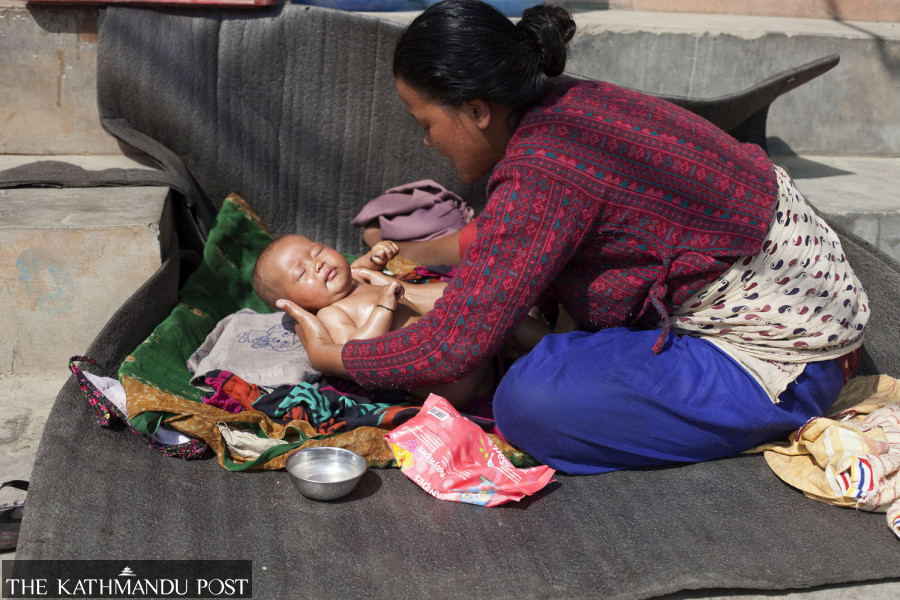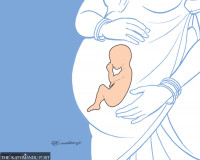Health
Thousands of women skip routine maternity services
Around 140,000 Nepali women give birth at home, around 210,000 do not make postnatal visits and 45,000 don’t receive antenatal care, report says.
Arjun Poudel
If the preliminary report of Nepal Demographic and Health Survey-2022 is anything to go by, around 210,000 women do not receive postnatal visits, 140,000 women give birth to their babies at home and 45,000 women do not receive antenatal care visits.
However, officials at the Ministry of Health and Population said that they are still unaware of the identity and whereabouts of those women that are deprived of routine maternity services.
“We do not know who those women are and where they are,” said Nisha Joshi, senior public health officer at the Family Welfare Division under the Department of Health Services. “Despite an impressive improvement in maternal health care seeking trends in the country, the report shows that thousands of women are still deprived of maternity care services.”
The nationwide study carried out between January 5 and June 22 last year with technical and financial support from the United States Agency for International Development shows that only 70.2 percent women received a postnatal check during the first two days after birth. It is estimated that around 700,000 women get pregnant every year throughout the country.
The figure was 57 percent in 2016.
The report also shows that 94.3 percent women received antenatal care, meaning that around six percent or 45,000 women did not receive the service. The figure was 84 percent in 2016.
Likewise, the report shows that 79.3 percent of women gave birth to their babies in health facilities, which means over 20 percent or around 140,000 women gave birth to their babies at home.
The figure was only 65 percent in 2016.
The report also shows that 96.1 percent pregnant women received iron supplementation tablets during their pregnancies, meaning that four percent of the total or around 28,000 women did not take the supplement.
Maternity care visits, including antenatal care visits, postnatal care visits and institutional delivery, and provisions of iron supplementation and folic acid are among the measures taken by authorities to lessen maternal deaths. The government provides all said services free of cost from state-run health facilities throughout the country. Some community hospitals and medical colleges also offer the services free of cost for which the Ministry of Health and Population reimburses the amount to those health facilities.
Nepal reduced the maternal mortality rate from 539 per 100,000 births in 1996 to 239 per 100,000 births in 2016—for which the country even received the Millennium Development Goals award. Since then, the number has not declined significantly.
The health target under the UN’s Sustainable Development Goals is to reduce maternal mortality rate to 75 for every 100,000 births by 2030.
SDGs, a follow-up on the Millennium Development Goals (MDGs), aims at ending poverty and hunger and all forms of inequality in the world by 2030, and Nepal has committed to meeting the goals.
“We are in line to meet the SDG target on maternal health but the problem is a large number of women are still deprived of the basic services offered by the government,” said Joshi. “We hope that the detailed report of the Nepal Demographic Health Survey-2022 would help us to figure out who and the whereabouts of the women left out of the maternity care services.”
To lessen complications and maternal deaths, the Health Ministry has doubled antenatal care visits from four to eight. To encourage pregnant women to make antenatal care visits, the government also provides allowances. Experts say antenatal visits will help health workers rule out complications earlier in the pregnancy.
The Health Ministry has also hired trained nurses to provide postnatal care at home. Of the total number of maternal deaths, 24 percent die during or after childbirth and 19 percent in the postnatal period, according to the Health Ministry.
The government also provides iron supplements free of cost from state-run health facilities.
Institutional delivery at state-run health facilities has been provided free of cost for years.
Maternal health experts say that access to health care facilities and availability of trained human resources at health care facilities are still a main challenge to lessen maternal deaths.
“It would take hours to reach health facilities in remote settings,” said Dr Ganesh Dangal, president of Nepal Society of Obstetricians and Gynaecologists. “Even if women in labour are taken to health facilities, there is no guarantee that health facilities have trained human resources.”
Doctors say health authorities failed to convince people about the importance of postnatal care and possible risk factors after child births.
Excessive bleeding after childbirth, also known as postpartum haemorrhage, is the most common factor leading to the death of new mothers in the country.
Several government programmes—increasing antenatal and postnatal care, President’s Women Uplift Programme, free institutional delivery service, and allowances given to pregnant women for antenatal, postnatal and institutional delivery—have yielded results to reduce maternal deaths. Experts say that a lot of improvements have to be made to lessen the current rate of maternal deaths.




 6.84°C Kathmandu
6.84°C Kathmandu














